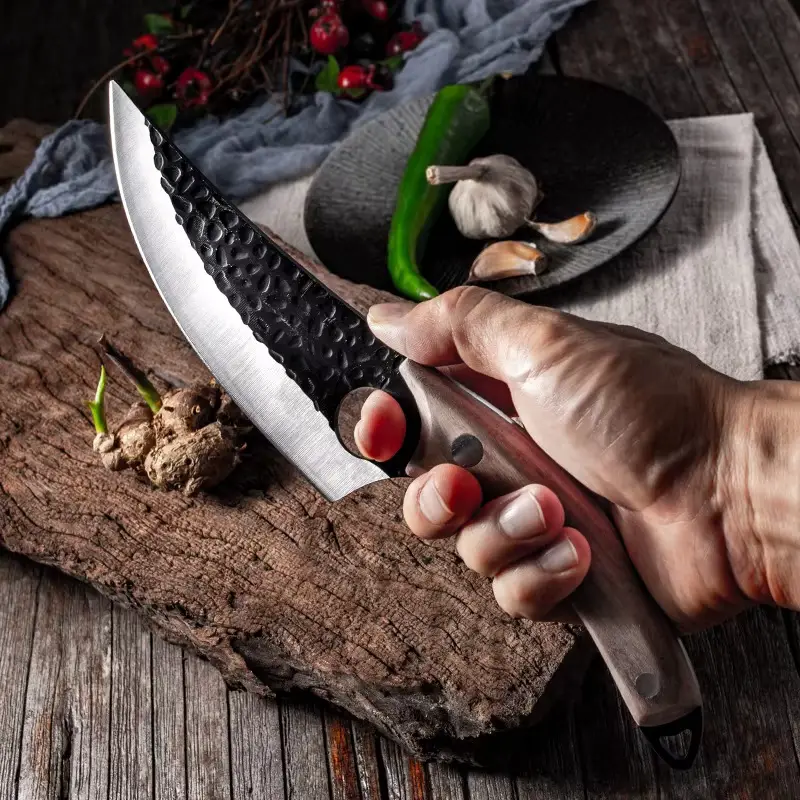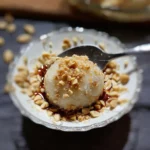I’ll be the first to admit, I was a die-hard potato salad purist for most of my life. The thought of a barbecue without that classic, creamy, potato-laden bowl seemed almost sacrilegious. When a friend first mentioned they were bringing a “Faux Potato Salad” to a potluck, I probably rolled my eyes. Cauliflower pretending to be a potato? No, thank you. But then, I tried it. That first bite was a moment of culinary epiphany. It had the creamy, tangy dressing I adored, the satisfying crunch of celery and onion, the comforting presence of hard-boiled egg, but the “potatoes” were… lighter. They were tender yet firm, without a hint of the sogginess that can sometimes plague traditional potato salad. It was all the flavor, all the comfort, but with a refreshingly light texture that didn’t weigh me down. I was an instant convert. Now, this Cauliflower Faux Potato Salad is my go-to recipe. I bring it to every gathering, and the reaction is always the same: initial skepticism, followed by wide-eyed surprise, and finally, a request for the recipe. It’s a game-changer for anyone living a low-carb lifestyle, a blessing for those who want a lighter option, and a delicious way to get even the pickiest eaters to enjoy their vegetables.
The Ultimate Faux Potato Salad Recipe (Keto & Low-Carb Friendly)
This recipe is meticulously crafted to mimic the texture and flavor of classic potato salad, all while using cauliflower as a healthy, low-carb base. The secret lies in the preparation of the cauliflower and a perfectly balanced, creamy dressing.
Ingredients
For the Cauliflower Base:
- 1 large Head of Cauliflower (approximately 2-2.5 pounds)
- 1 tablespoon Salt (for the steaming water)
- 1 Bay Leaf (optional, for infusing a subtle savory note)
For the Creamy Dressing and Mix-ins:
- 1 cup Mayonnaise (use a high-quality, avocado oil-based one for keto/paleo)
- 4 large Hard-Boiled Eggs, cooled and roughly chopped
- 3 Celery Stalks, finely diced
- ½ cup finely diced Red Onion
- 2 tablespoons Apple Cider Vinegar
- 1 tablespoon Dijon Mustard
- ¼ cup chopped Fresh Dill (or 2 tablespoons fresh parsley)
- 1 teaspoon Celery Seed
- ½ teaspoon Salt (or to taste)
- ½ teaspoon Black Pepper, freshly ground
- Paprika, for garnish
Step-by-Step Instructions to Craft Your Faux Potato Salad
Achieving the perfect texture is the most critical part of making a convincing faux potato salad. Follow these steps closely, especially those concerning the cooking and cooling of the cauliflower, for a flawless result that will fool even the most dedicated potato salad aficionados.
Step 1: Prepare the Cauliflower
Your goal is to create pieces that resemble the small cubes of potato found in a traditional salad.
- Start by thoroughly washing and drying the head of cauliflower. Remove the outer leaves and the thick core.
- Chop the cauliflower into small, uniform florets, about ½ to ¾-inch in size. Consistency is key here, as it ensures even cooking. You can use some of the tender parts of the stem as well, just be sure to chop them to a similar size as the florets.
Step 2: Cook the Cauliflower to Perfection (The Steaming Method)
This is the single most important step for avoiding a watery salad. We will be steaming, not boiling, the cauliflower. Boiling waterlogs the florets, making it impossible to achieve the right texture and resulting in a soupy final product. Steaming cooks the cauliflower perfectly while keeping it relatively dry.
- Fill a large pot with about 1-2 inches of water. Add 1 tablespoon of salt and the optional bay leaf to the water. This will lightly season the cauliflower as it steams.
- Bring the water to a rolling boil.
- Place the chopped cauliflower florets into a steamer basket and lower it into the pot. Ensure the water level is below the bottom of the basket; the cauliflower should not be touching the water.
- Cover the pot with a tight-fitting lid and steam for 5-7 minutes. The exact time will depend on the size of your florets.
- Check for doneness at the 5-minute mark. You want the cauliflower to be “fork-tender”—a fork should be able to pierce a floret with just a little resistance. It should not be soft, mushy, or falling apart. It’s better to slightly undercook it than to overcook it, as it will soften a bit more as it marinates in the dressing.
Step 3: The Crucial Cooling and Drying Stage
Once the cauliflower is perfectly steamed, you must cool it down quickly and allow it to dry. This prevents carryover cooking and removes excess surface moisture, which is another key defense against a watery salad.
- Immediately remove the steamer basket from the pot.
- Carefully spread the hot cauliflower florets in a single layer on a large, parchment-lined baking sheet.
- Let the cauliflower cool completely at room temperature, which can take about 30-45 minutes. For a faster cool-down, you can place the baking sheet in the refrigerator for 15-20 minutes. The goal is to have cool, dry-to-the-touch florets before they meet the dressing.
Step 4: Prepare the Hard-Boiled Eggs and Other Mix-ins
While the cauliflower is cooling, you can prepare the rest of your ingredients.
- Peel your cooled, hard-boiled eggs and give them a rough chop. Some larger pieces and some smaller bits create a nice, rustic texture.
- Finely dice the celery and red onion. The smaller dice allows their flavor and crunch to be present in every bite without being overwhelming.
- Finely chop your fresh dill or parsley.
Step 5: Mix the Creamy, Tangy Dressing
The dressing is the soul of the salad, bringing all the familiar flavors to the party.
- In a very large mixing bowl (large enough to eventually hold all the ingredients), combine the mayonnaise, apple cider vinegar, Dijon mustard, celery seed, ½ teaspoon of salt, and freshly ground black pepper.
- Whisk these ingredients together until the dressing is completely smooth and creamy.
- Gently stir in the diced celery, red onion, and fresh dill.
- Give the dressing a taste at this point. This is your chance to adjust the seasonings before adding the main ingredients. Does it need more salt? More tang? Adjust it now to your preference.
Step 6: Combine, Chill, and Serve
The final assembly requires a gentle touch and patience for the best flavor.
- Once the cauliflower is completely cool and dry, add it to the large bowl with the dressing. Add the chopped hard-boiled eggs as well.
- Using a large rubber spatula, gently fold everything together until the cauliflower and eggs are evenly coated in the creamy dressing. Be careful not to overmix or be too rough, as this can break down the cauliflower florets.
- Cover the bowl tightly with plastic wrap and place it in the refrigerator to chill for at least 2 hours. This chilling time is non-negotiable. It allows the cauliflower to absorb the flavors of the dressing and for the entire salad to meld into a cohesive, delicious dish. For best results, let it chill for 4 hours or even overnight.
- Just before serving, give the salad a final gentle stir. Garnish with a sprinkle of paprika for that classic potato salad look.
Nutrition Facts
- Servings: This recipe makes approximately 8-10 side-dish servings.
- Calories per serving: Approximately 180-220 calories.
Disclaimer: The nutritional information provided is an estimate and can vary significantly based on the specific brands of ingredients used, especially the mayonnaise, and the final portion sizes.
Preparation Time
- Active Preparation Time: 25 minutes (includes chopping and mixing)
- Cook Time: 5-7 minutes (for steaming cauliflower)
- Cooling & Chilling Time: Minimum of 2.5 hours, ideally 4+ hours
- Total Time: Approximately 3 to 5 hours (mostly hands-off time)
How to Serve This Delicious Low-Carb Potato Salad Alternative
This versatile Faux Potato Salad shines in any setting where its classic counterpart would be welcome. Its light yet satisfying nature makes it a perfect partner for a wide array of dishes and occasions.
- The Quintessential Barbecue Sidekick: This salad was born for a summer cookout. Its cool, tangy creaminess provides the perfect, refreshing contrast to rich, smoky, and charred flavors. Serve it alongside grilled chicken, juicy hamburgers, smoked brisket, or fall-off-the-bone BBQ ribs for a truly winning combination.
- A Star on the Holiday Buffet: Lighten up your festive spreads for holidays like Easter, the 4th of July, or Labor Day. It sits beautifully next to a holiday ham, roast turkey, or fried chicken, offering a familiar comfort-food feel without the heavy carb load.
- A Perfect Light Lunch or Meal Prep Component: This salad is a fantastic standalone lunch. Serve a generous scoop on a bed of crisp lettuce or alongside some sliced deli meats and cheese for a satisfying, low-carb midday meal. It also holds up exceptionally well in the refrigerator, making it an excellent choice for meal prepping your weekday lunches.
- Elevate Your Garnish Game: While a classic sprinkle of paprika is perfect, don’t be afraid to add other garnishes just before serving to add texture and flavor. Consider topping your bowl with crumbled crispy bacon, sliced green onions or chives, or extra fresh dill for a beautiful presentation.
Additional Tips for Faux Potato Salad Perfection
Master this recipe and avoid common pitfalls with these five essential tips, designed to ensure your cauliflower salad is indistinguishable from the real deal.
- The Steam, Don’t Boil Mandate: It bears repeating because it is the most critical rule for success. Boiling cauliflower immerses it in water, causing it to absorb an immense amount of moisture. This water will inevitably leach out into your dressing, creating a soupy, unappealing mess. Steaming cooks the florets with moist heat, rendering them perfectly tender while their surfaces remain relatively dry, which is exactly what you need for a creamy, not watery, salad.
- The Chill is a Flavor-Melding Necessity: Do not rush the chilling process. This step is not just about serving the salad cold. It is a crucial marination period during which the relatively neutral-tasting cauliflower florets absorb all the tangy, savory, and herby notes from the dressing. A salad eaten immediately after mixing will taste like its separate components; a salad that has chilled for hours will taste like a unified, harmonious dish. The flavor is significantly better the next day.
- Perfecting the “Potato” Texture: The ideal texture for the cauliflower is fork-tender with a slight bite, mimicking a perfectly cooked potato. Overcooking it by even a minute can turn it to mush. Test it frequently during the last couple of minutes of steaming. For a more authentic, rustic potato salad texture, you can take about half a cup of the cooked florets and lightly mash them with a fork before folding them into the dressing. This releases a bit of their substance and helps to thicken the final salad.
- Customize Your Crunch and Flavor Profile: This recipe is a fantastic base for customization. For a sweet and tangy crunch reminiscent of many regional potato salads, add ¼ cup of sweet pickle relish or finely chopped dill pickles. For more color and a different kind of crunch, consider adding finely diced red bell pepper. For an irresistible smoky and salty element, fold in ½ cup of crumbled, crispy bacon just before serving.
- Taste and Perfect Your Dressing First: The dressing is where all the flavor lives. Before you ever introduce the cauliflower or eggs, perfect the dressing on its own. After you’ve whisked it together, give it a taste. Does it need more of a tangy bite? Add another teaspoon of apple cider vinegar. Is it lacking a savory depth? A pinch more salt or a little extra Dijon mustard can do the trick. Seasoning the dressing aggressively at this stage is key, as its flavor will be slightly muted once it coats all the cauliflower.
Frequently Asked questions (FAQ)
1. Can I use frozen cauliflower for this recipe?
While you technically can, fresh cauliflower is highly, highly recommended for the best results. Frozen cauliflower has a much higher water content and a softer texture from the freezing process. It can very easily become mushy when cooked. If you absolutely must use frozen, you need to thaw it completely and then press and squeeze out as much water as physically possible using paper towels or a clean kitchen towel before steaming. Even then, you will need to reduce the steaming time significantly.
2. Why is my Faux Potato Salad watery?
This is the most common issue and almost always stems from one of three culprits: 1) You boiled the cauliflower instead of steaming it, causing it to become waterlogged. 2) You didn’t allow the steamed cauliflower to cool and dry completely before mixing it with the dressing, so excess surface moisture thinned the sauce. 3) You didn’t let the salad chill long enough, which can sometimes give it a looser consistency before the dressing has time to set and cling to the cauliflower.
3. How far in advance can I make this salad?
This is an excellent make-ahead dish! In fact, the flavor is arguably better on the second day after the flavors have had ample time to meld. You can make it up to 48 hours in advance. Store it in a tightly sealed, airtight container in the refrigerator. Just be sure to give it a gentle stir before serving and perhaps freshen it up with a sprinkle of fresh herbs.
4. What are some good substitutes for mayonnaise?
If you’re not a fan of mayonnaise or want a different flavor profile, you have options. You can substitute part or all of the mayonnaise with full-fat Greek yogurt or sour cream. This will create a tangier, lighter dressing, though it will slightly increase the carbohydrate count and is not strictly keto. For a dairy-free or paleo version, it’s essential to use a mayonnaise made with avocado oil or olive oil and to ensure it has no added sugar.
5. Is this recipe really keto-friendly?
Yes, this recipe as written is very keto-friendly. Cauliflower is a cornerstone low-carb vegetable. The other primary ingredients—mayonnaise (ensure it’s sugar-free), eggs, celery, and onion—are all very low in carbs and high in healthy fats and fiber. It’s a fantastic way to enjoy a classic comfort food while adhering to a ketogenic diet. Just be mindful of any customizations, as adding ingredients like sweet pickle relish can introduce hidden sugars.

Faux Potato Salad recipe
Ingredients
For the Cauliflower Base:
-
1 large Head of Cauliflower (approximately 2-2.5 pounds)
-
1 tablespoon Salt (for the steaming water)
-
1 Bay Leaf (optional, for infusing a subtle savory note)
For the Creamy Dressing and Mix-ins:
-
1 cup Mayonnaise (use a high-quality, avocado oil-based one for keto/paleo)
-
4 large Hard-Boiled Eggs, cooled and roughly chopped
-
3 Celery Stalks, finely diced
-
½ cup finely diced Red Onion
-
2 tablespoons Apple Cider Vinegar
-
1 tablespoon Dijon Mustard
-
¼ cup chopped Fresh Dill (or 2 tablespoons fresh parsley)
-
1 teaspoon Celery Seed
-
½ teaspoon Salt (or to taste)
-
½ teaspoon Black Pepper, freshly ground
-
Paprika, for garnish
Instructions
Step 1: Prepare the Cauliflower
Your goal is to create pieces that resemble the small cubes of potato found in a traditional salad.
-
Start by thoroughly washing and drying the head of cauliflower. Remove the outer leaves and the thick core.
-
Chop the cauliflower into small, uniform florets, about ½ to ¾-inch in size. Consistency is key here, as it ensures even cooking. You can use some of the tender parts of the stem as well, just be sure to chop them to a similar size as the florets.
Step 2: Cook the Cauliflower to Perfection (The Steaming Method)
This is the single most important step for avoiding a watery salad. We will be steaming, not boiling, the cauliflower. Boiling waterlogs the florets, making it impossible to achieve the right texture and resulting in a soupy final product. Steaming cooks the cauliflower perfectly while keeping it relatively dry.
-
Fill a large pot with about 1-2 inches of water. Add 1 tablespoon of salt and the optional bay leaf to the water. This will lightly season the cauliflower as it steams.
-
Bring the water to a rolling boil.
-
Place the chopped cauliflower florets into a steamer basket and lower it into the pot. Ensure the water level is below the bottom of the basket; the cauliflower should not be touching the water.
-
Cover the pot with a tight-fitting lid and steam for 5-7 minutes. The exact time will depend on the size of your florets.
-
Check for doneness at the 5-minute mark. You want the cauliflower to be “fork-tender”—a fork should be able to pierce a floret with just a little resistance. It should not be soft, mushy, or falling apart. It’s better to slightly undercook it than to overcook it, as it will soften a bit more as it marinates in the dressing.
Step 3: The Crucial Cooling and Drying Stage
Once the cauliflower is perfectly steamed, you must cool it down quickly and allow it to dry. This prevents carryover cooking and removes excess surface moisture, which is another key defense against a watery salad.
-
Immediately remove the steamer basket from the pot.
-
Carefully spread the hot cauliflower florets in a single layer on a large, parchment-lined baking sheet.
-
Let the cauliflower cool completely at room temperature, which can take about 30-45 minutes. For a faster cool-down, you can place the baking sheet in the refrigerator for 15-20 minutes. The goal is to have cool, dry-to-the-touch florets before they meet the dressing.
Step 4: Prepare the Hard-Boiled Eggs and Other Mix-ins
While the cauliflower is cooling, you can prepare the rest of your ingredients.
-
Peel your cooled, hard-boiled eggs and give them a rough chop. Some larger pieces and some smaller bits create a nice, rustic texture.
-
Finely dice the celery and red onion. The smaller dice allows their flavor and crunch to be present in every bite without being overwhelming.
-
Finely chop your fresh dill or parsley.
Step 5: Mix the Creamy, Tangy Dressing
The dressing is the soul of the salad, bringing all the familiar flavors to the party.
-
In a very large mixing bowl (large enough to eventually hold all the ingredients), combine the mayonnaise, apple cider vinegar, Dijon mustard, celery seed, ½ teaspoon of salt, and freshly ground black pepper.
-
Whisk these ingredients together until the dressing is completely smooth and creamy.
-
Gently stir in the diced celery, red onion, and fresh dill.
-
Give the dressing a taste at this point. This is your chance to adjust the seasonings before adding the main ingredients. Does it need more salt? More tang? Adjust it now to your preference.
Step 6: Combine, Chill, and Serve
The final assembly requires a gentle touch and patience for the best flavor.
-
Once the cauliflower is completely cool and dry, add it to the large bowl with the dressing. Add the chopped hard-boiled eggs as well.
-
Using a large rubber spatula, gently fold everything together until the cauliflower and eggs are evenly coated in the creamy dressing. Be careful not to overmix or be too rough, as this can break down the cauliflower florets.
-
Cover the bowl tightly with plastic wrap and place it in the refrigerator to chill for at least 2 hours. This chilling time is non-negotiable. It allows the cauliflower to absorb the flavors of the dressing and for the entire salad to meld into a cohesive, delicious dish. For best results, let it chill for 4 hours or even overnight.
-
Just before serving, give the salad a final gentle stir. Garnish with a sprinkle of paprika for that classic potato salad look.
Nutrition
- Serving Size: one normal portion
- Calories: 180-220





